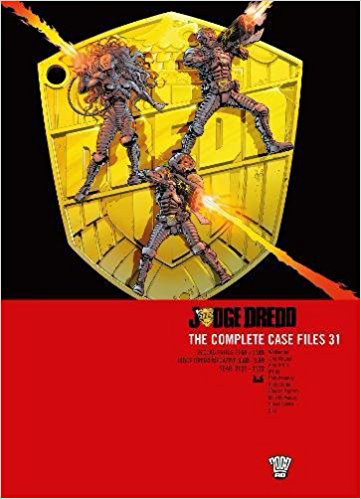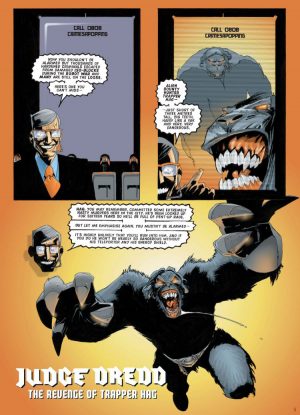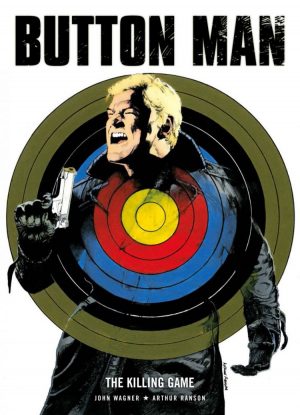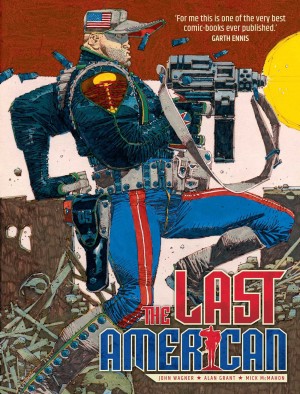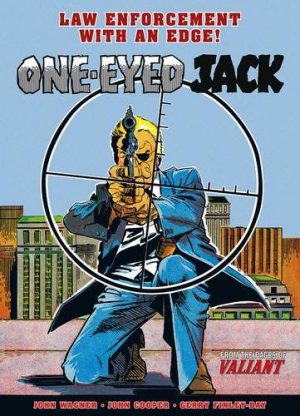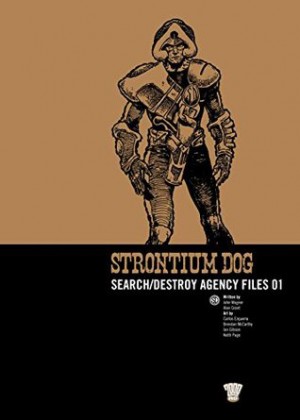Review by Roy Boyd
Complete Case Files 30 told one long story – ‘Doomsday’ – from a couple of different perspectives, but this book sees a return to short stories, with most just one part, bar a few exceptions. This format allows for a good mix of story styles and John Wagner and Alan Grant, sharing the writing duties, usually do an excellent job of matching artists to stories that complement their variety.
We’re off to a really strong start with ‘The Return of Trapper Hag’, a two-part story featuring one of Dredd’s old enemies. The thing is, Trapper Hag, while imposing, is a bit rubbish and dumb, and his popularity is largely due to being beautifully designed and drawn in his maiden appearance by the late, great Steve Dillon, back in 2000 AD’s golden age. Siku’s manga-style artwork is slick and kinetic, and the story is very funny, taking great delight in pointing out Hag’s general all-round stupidity as Dredd, on great form, torments and baits the alien bounty hunter.
Although Ol’ Stoney-Face barely features, one of the undoubted highlights in a book that’s mostly solid if unremarkable stories, is the final story from the 2000 AD section: ‘No Man’s Land.’ This three part tale is a cracker, featuring the welcome return of the Banzai Battalion in a story that’s handled beautifully by Henry Flint. The Battalion are a bunch of tiny pest-control robots with over-the-top military personalities, and Dredd has encountered them before. Great stuff. And while most of the stories fail to set the heather alight, it must be said that there’s some really great artwork on offer throughout this book.
Wagner, who created Dredd with Carlos Ezquerra, has spoken of the long shadow he casts over this character, and there’s no denying that no one writes Dredd better. Grant’s stories generally just don’t work as well. While it’s easy to imagine the elevator pitch for each, that’s sometimes all they are, and they usually lack the depth of Wagner’s stories. A couple of examples include ‘Art for Art’s Sake’, with Simon Davis’s painted artwork squandered on a pointless story, and ‘Old Pal’s Act’, a very odd meta story (even by Judge Dredd standards) that features a future version of Wagner, Grant’s old writing partner. Cam Kennedy’s artwork is as good as ever, but the story doesn’t quite work, coming across as laboured and just a bit daft.
It’s well documented that no one involved in the creation of 2000 AD ever dreamed that it would last until the millennium, never mind well beyond. These books bring the reprints up to the year 2000, and it would be fair to say that, almost twenty years later at the time of writing, Dredd shows little sign of diminishing in popularity. A large part of the reason for the enduring success of the comic, and specifically their flagship hard man, has been the love and care that everyone involved clearly has for a character that – while there’s none more American – is one of Britain’s most successful and enduring comic creations.
